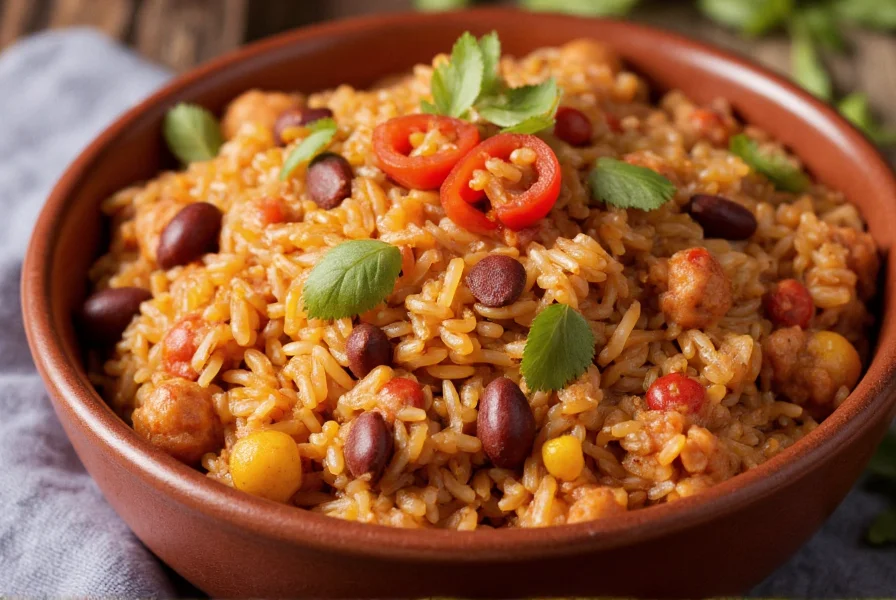Originating from Southeast Asian culinary traditions, chili rice has evolved into numerous regional interpretations while maintaining its fundamental spicy rice concept. The dish's simplicity makes it accessible for home cooking while allowing for creative adaptations based on available ingredients and personal taste preferences.
Essential Components of Authentic Chili Rice
The foundation of any good chili rice recipe starts with quality ingredients. While variations exist, the essential components remain consistent across most preparations:
- Rice - Preferably jasmine or basmati for optimal texture
- Chili peppers - Fresh bird's eye chilies or dried alternatives
- Aromatics - Garlic, shallots, or onions for flavor base
- Fat component - Cooking oil or sesame oil for texture
- Seasonings - Salt, sugar, and sometimes fish sauce or soy sauce

Regional Variations Worth Exploring
Chili rice manifests differently across culinary traditions, each bringing unique characteristics to this simple concept:
| Region | Distinctive Features | Key Ingredients |
|---|---|---|
| Thai | Intensely spicy with balanced sweet-sour notes | Bird's eye chilies, lime, fish sauce, palm sugar |
| Chinese | Milder heat with aromatic garlic and oil infusion | Dried red chilies, garlic, Sichuan peppercorns |
| Malaysian | Complex spice profile with coconut milk option | Chili paste (sambal), tamarind, belacan (shrimp paste) |
| Mexican-inspired | Tomato-based with cumin and oregano | Chipotle peppers, tomatoes, cumin, cilantro |
Preparing Perfect Chili Rice: Step-by-Step Approach
Creating exceptional chili rice requires attention to technique as much as ingredients. Follow these steps for optimal results when preparing how to make chili rice at home:
- Cook rice properly using a 1:1.25 rice-to-water ratio for ideal texture
- Prepare chili mixture by finely mincing fresh chilies or rehydrating dried ones
- Sauté aromatics in oil until fragrant but not browned
- Add chili components and cook briefly to release flavors
- Fold in cooled rice gently to avoid mushiness
- Season carefully, balancing heat with salt and subtle sweetness
- Allow flavors to meld for 5-10 minutes before serving
Nutritional Profile and Dietary Considerations
Understanding the healthy chili rice benefits helps incorporate this dish into balanced meal planning. A standard serving (1 cup) typically contains:
- Approximately 200-250 calories
- 4-6g protein depending on additions
- 45-55g carbohydrates
- 2-4g fat from cooking oil
- Significant capsaicin content from chilies with potential metabolic benefits
For those seeking quick chili rice meal ideas with enhanced nutrition, consider adding:
- Steamed vegetables for added fiber and vitamins
- Lean proteins like shredded chicken or tofu
- Leafy greens folded in at the end
- Lime or lemon juice for vitamin C boost

Common Mistakes to Avoid
Even experienced cooks can make errors when preparing the best chili rice recipe. Watch for these pitfalls:
- Using hot rice that becomes mushy when mixed with chili components
- Overcooking the chili mixture, causing bitterness
- Adding all seasoning at once rather than balancing gradually
- Using inappropriate rice varieties that don't hold texture
- Ignoring the importance of proper chili-to-rice ratio
Serving Suggestions and Pairings
Chili rice serves as both a standalone meal and an excellent accompaniment. Consider these spicy rice dish variations for different occasions:
- As a base for grilled meats or fish
- With a fried egg on top for breakfast or brunch
- Alongside cooling elements like cucumber salad or yogurt
- As part of a larger spread with other Asian-inspired dishes
- With additional protein sources for a complete meal
Frequently Asked Questions
What's the difference between chili rice and regular rice?
Chili rice incorporates chili peppers and complementary seasonings directly into the cooked rice, creating a spicy, flavorful dish. Regular rice refers to plain cooked rice without added seasonings or flavorings. The preparation method for chili rice typically involves sautéing aromatics and chilies before folding them into properly cooked rice.
Can I make chili rice with leftover rice?
Yes, using day-old refrigerated rice actually produces better results for chili rice as the grains are drier and less likely to become mushy. Just ensure the rice has been properly stored and is no more than 3-4 days old for food safety. Bring the rice to room temperature before incorporating the chili mixture.
How can I adjust the spiciness level of chili rice?
Control spiciness by adjusting the type and amount of chilies used. Remove seeds and membranes from fresh chilies to reduce heat, or use milder varieties like Anaheim instead of bird's eye chilies. You can also balance heat with sugar, lime juice, or coconut milk. Add chilies gradually, tasting as you go, to achieve your preferred spice level.
How long does homemade chili rice stay fresh?
Properly stored in an airtight container, chili rice remains fresh in the refrigerator for 3-4 days. For longer storage, freeze portions for up to 2 months. When reheating, add a small amount of water or oil to restore moisture, as the rice tends to dry out slightly during storage. Always reheat thoroughly to 165°F (74°C) for food safety.
Is chili rice gluten-free?
Basic chili rice made with rice, chilies, garlic, oil, and salt is naturally gluten-free. However, check all added ingredients carefully, as some variations might include soy sauce or other seasonings that contain gluten. For a guaranteed gluten-free version, use tamari instead of regular soy sauce and verify all packaged ingredients are certified gluten-free.











 浙公网安备
33010002000092号
浙公网安备
33010002000092号 浙B2-20120091-4
浙B2-20120091-4